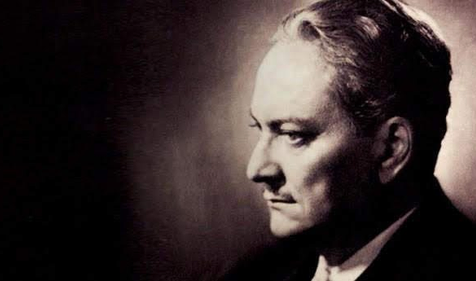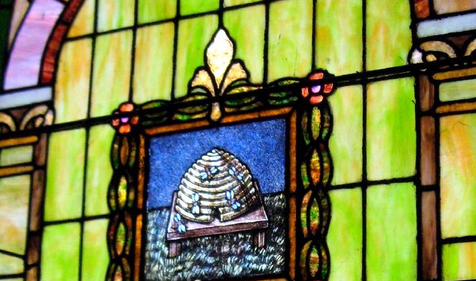Our Q&A with Brother Roberts, 32°, HGA discusses how the tenets of the Craft transcend generations and his opinion on how the fraternity should evolve.
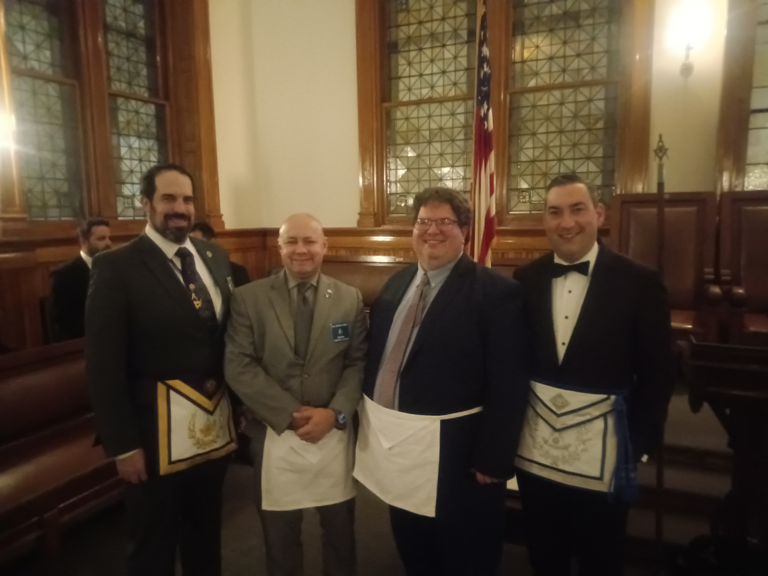
Meet Brother Andrew Roberts, 32°, HGA, a member of Oriental-Faxton Lodge #224 and the Valley of Utica. As a fourth-generation Freemason and a highly engaged Past Master, he has a unique perspective to share on the current and future state of the Craft. We sat down with this veteran Brother (who is only 35!) to learn more about his Masonic journey and how the Brotherhood has enriched his life.
How were you introduced to Freemasonry and what motivated you to join?
Brother Roberts: I grew up as what I affectionately refer to as a "Lodge Brat." I'm a fourth-generation Mason—my great-grandfather, grandfather, father, and I are all Masons. I grew up around the lodge while my dad was going through the officer line. He became Master when I was nine.
My dad never pressured me to join DeMolay as a kid or Blue Lodge as an adult; he wanted it to be the right fit for me. The positive influences and role models I had through both being a "Lodge Brat" and from DeMolay ultimately motivated me to join.
What were your first experiences with Freemasonry like?
Brother Roberts: My experiences were always positive and welcoming. The lodge I joined did a great job of making me feel welcome even before I petitioned. They had an informal gathering every month where they would host a dinner at a restaurant. They invited families of members but also kept it open to men interested in learning more about Freemasonry.
This approach was especially appealing to me as a college sophomore around age 20. Getting to know the Brothers in an informal setting was much less intimidating than a formal interview. I could meet them at Pizza Hut wearing a hoodie and jeans, learning about them as people first before deciding if I fit in.
What drew you to Scottish Rite?
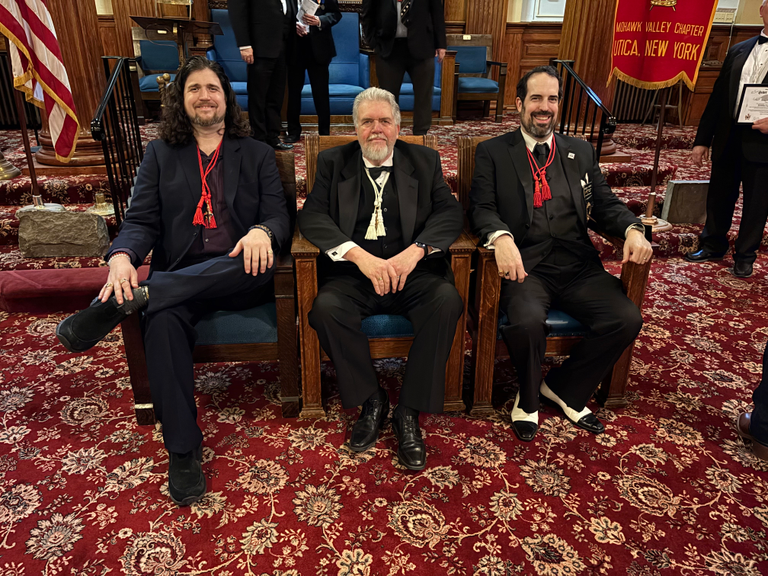
Brother Roberts: My connection to Scottish Rite began early, as my DeMolay chapter had been sponsored by the local Valley for over a century. My earliest memories of Scottish Rite include attending the family Christmas party with my dad, who is also a member. Those positive experiences created a foundation of familiarity that eventually led me to join.
What aspects of Freemasonry have been the most meaningful or rewarding for you?
Brother Roberts: The community aspect has been most meaningful to me. As a public school teacher, I see how valuable social connections are—humans need that interaction. Many men my age are searching for opportunities to give back to their communities and form lasting friendships but don't necessarily know how to find them.
Through Freemasonry, I'm connected with people of all ages. I go to lodge with a man who landed at Iwo Jima, and I have buddies my own age that I get together with outside of lodge.
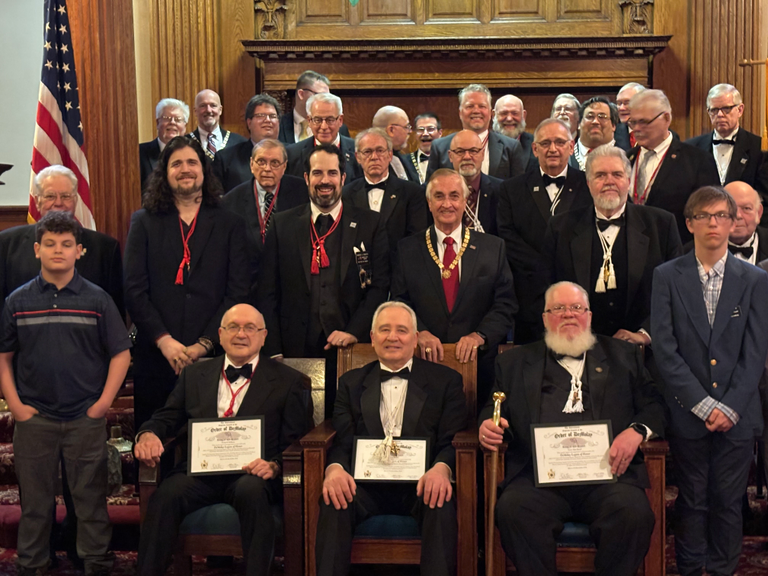
One experience really stands out: When I was Master of my lodge at age 26, my grandmother died, and two months later, my dad had a massive heart attack. The first people to reach out and provide support were members of my lodge. That kind of connection is what I think everyone wants but doesn't always know how to find.
What have you enjoyed most about being part of a multi-generational Brotherhood?
Brother Roberts: I love that I can connect with people I probably never would have met in my private life. We all have diverse lifestyles and backgrounds. We came to join Freemasonry for different reasons, but we share a common journey and experience.
I think that's a huge factor for both people joining and staying—it's not strange that I'm 35 and in lodge with someone who's 95. Despite being from completely different generations with different outlooks, we have a shared path that brought us together.
From your perspective, what do you wish older Brothers knew about engaging with younger Masons?
Brother Roberts: Family and work life dynamics have changed significantly across generations. When my grandfather went through the line and became Master in 1966, it was expected that he would get his two nights out of the house per month, plus visit other lodges and attend practices. As a young dad myself now, it's sometimes difficult to step away for these activities.
The Freemasonry of 2025 is different from the Freemasonry of 1925. The ideals, morals, and values remain unchanged, but the personal and professional lives of members have evolved. Most families now require two incomes, and many young fathers take a more active role in childcare than previous generations.
That's why programs like Thursday Night at the Rite, Hauts Grades Academy, or Masters of the Rite are so valuable—they allow you to engage with Masonry at your own convenience when your circumstances would prevent you from staying involved.
Just because I'm a younger Mason doesn't mean I'm not passionate about the fraternity. There's a generational shift that must occur for Freemasonry to remain healthy, but we're not asking the fraternity to compromise its values. If Freemasonry is going to attract more young men, we must meet them in the middle.
What do you wish non-Masons knew about Freemasonry?
Brother Roberts: That Freemasonry unites men from all walks of life and backgrounds around the same moral values that help drive civil society. It's something you join because you view yourself as a good person already, but you want to take the next step and strive toward being a better person each day.
What advice would you give to someone from your generation who's considering joining Freemasonry?
Brother Roberts: Don't be afraid to get involved. If you join a lodge or an appendant body, don't accept "Well, Jimmy's always done this part for the last 50 years." What happens when Jimmy gets sick or can't make it to lodge? You can step in.
I was 24 when I learned and performed the third degree historical lecture after being told someone had been doing it for years. I learned it anyway during my free time and stepped in when he said, "I'm sick of doing this. Can somebody else please do it?" From there, I caught the bug of wanting to participate more deeply.
Don't let tradition dampen your motivation or desire to contribute
Brother Roberts’ story shows how the tenets of the Craft can transcend generations – but that evolution in how our tenets are engaged with is key to satisfying the lifestyles of younger Masons. This conversation is part of the Scottish Rite, NMJ’s Path Forward initiative, helping Masons adapt our fraternity to ensure our Brotherhood thrives for centuries. Additional insights can be found in Supreme Council’s new book, The Path Forward: Empowering the Future of Freemasonry.
Related Stories
Discover additional Scottish Rite blogs and news on this topic.
-
Manly P. Hall: Philosopher, Mystic, and Freemason
Famous Masons
Read More about Manly P. Hall: Philosopher, Mystic, and Freemason
-
What Does the Beehive Mean in Freemasonry?
Degrees
Read More about What Does the Beehive Mean in Freemasonry?
-
Was Robert Burns a Freemason?
Famous Masons
Read More about Was Robert Burns a Freemason?

